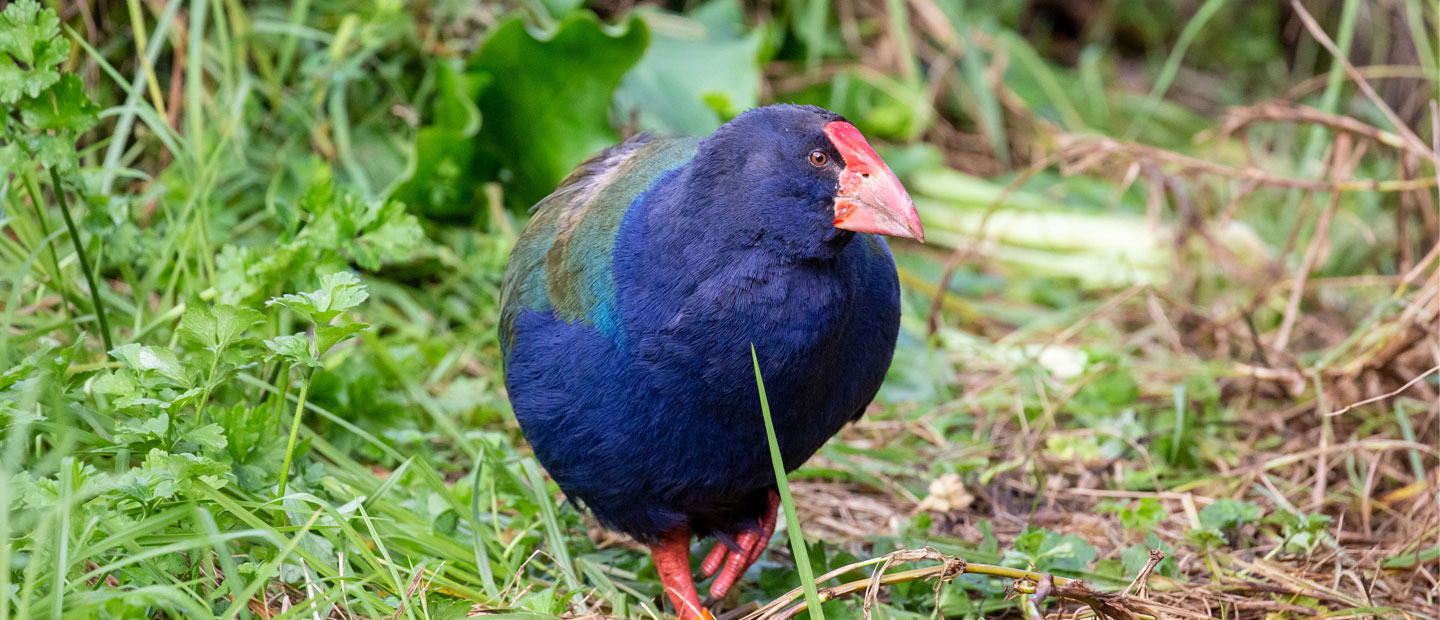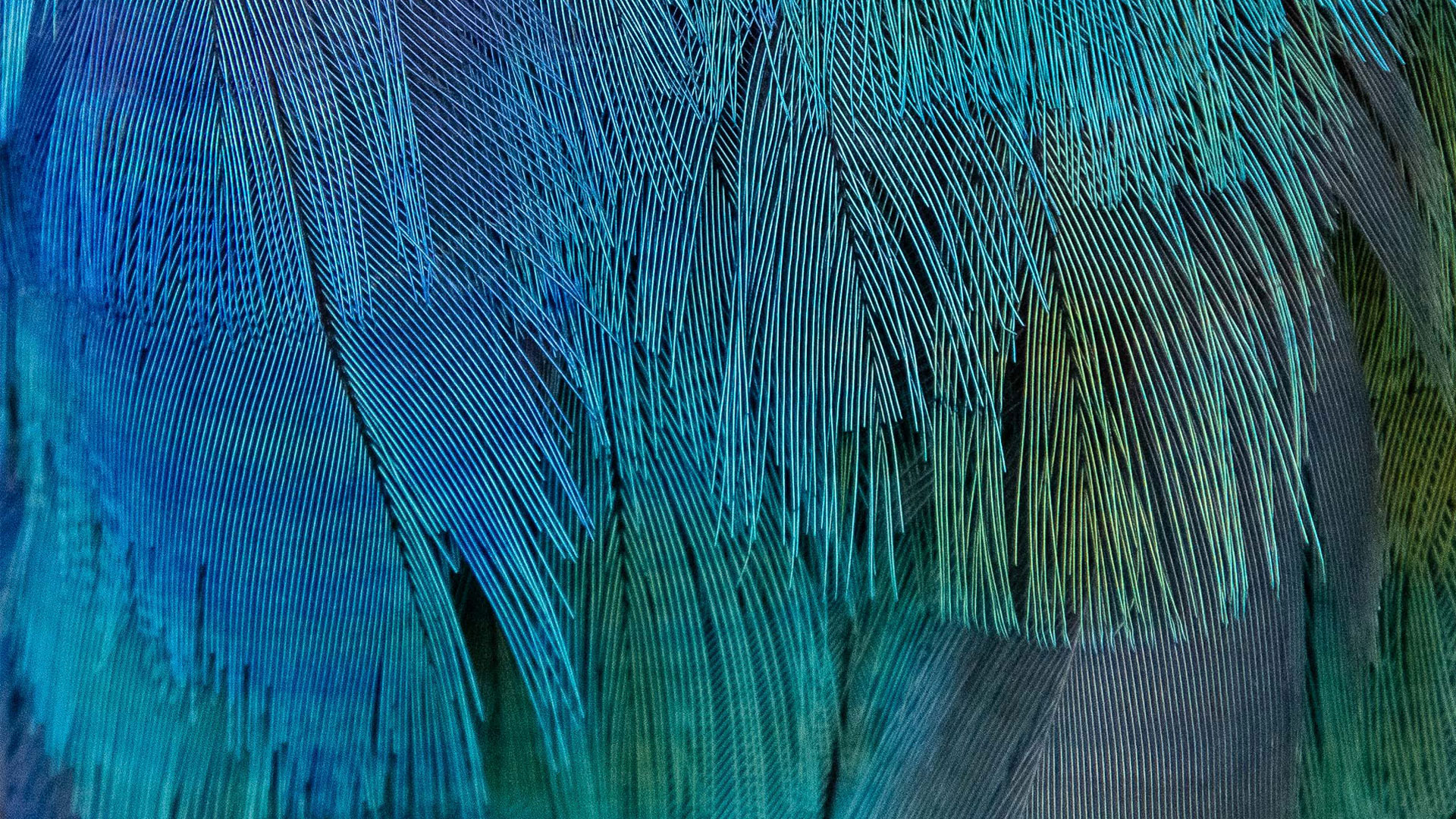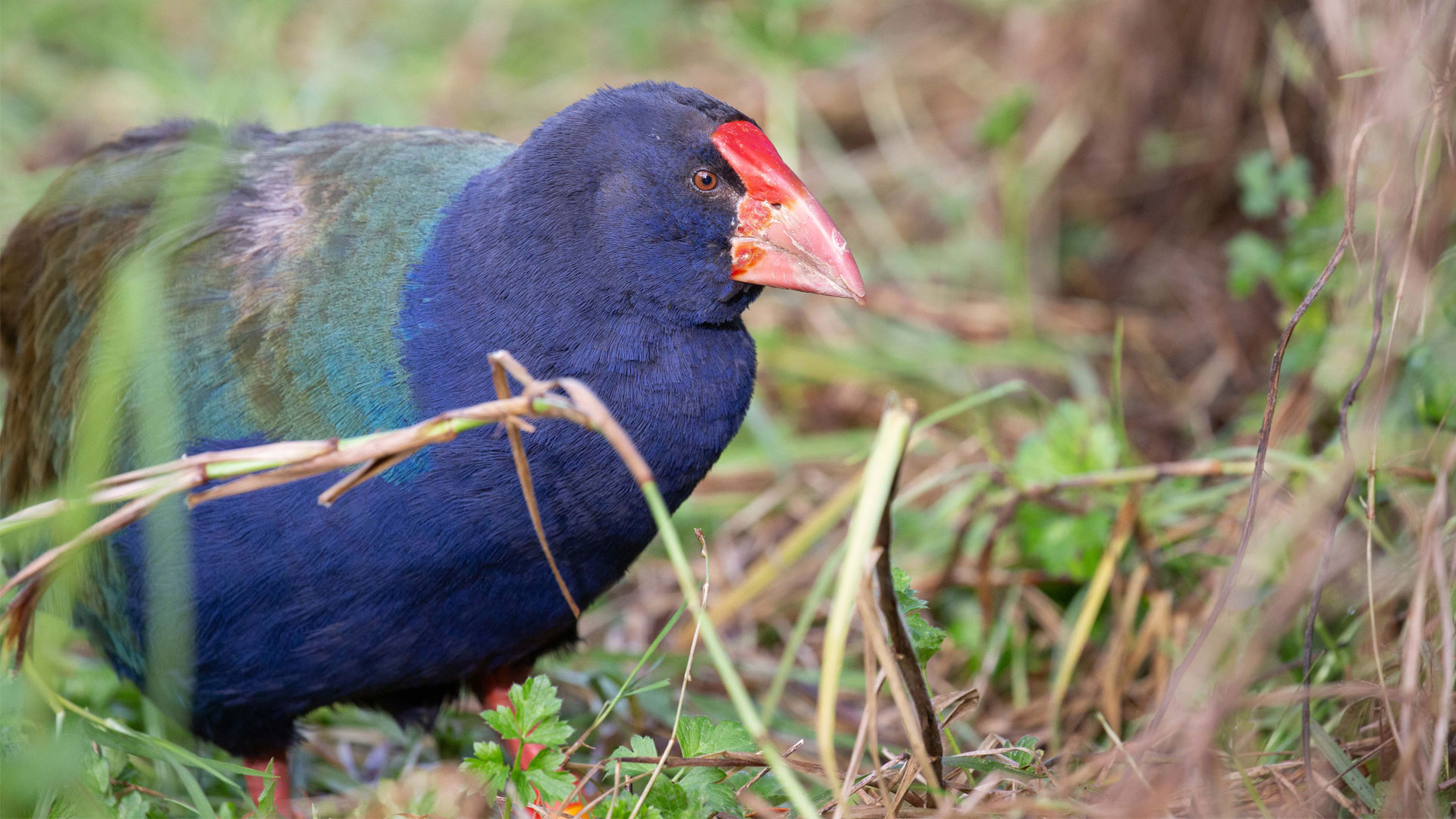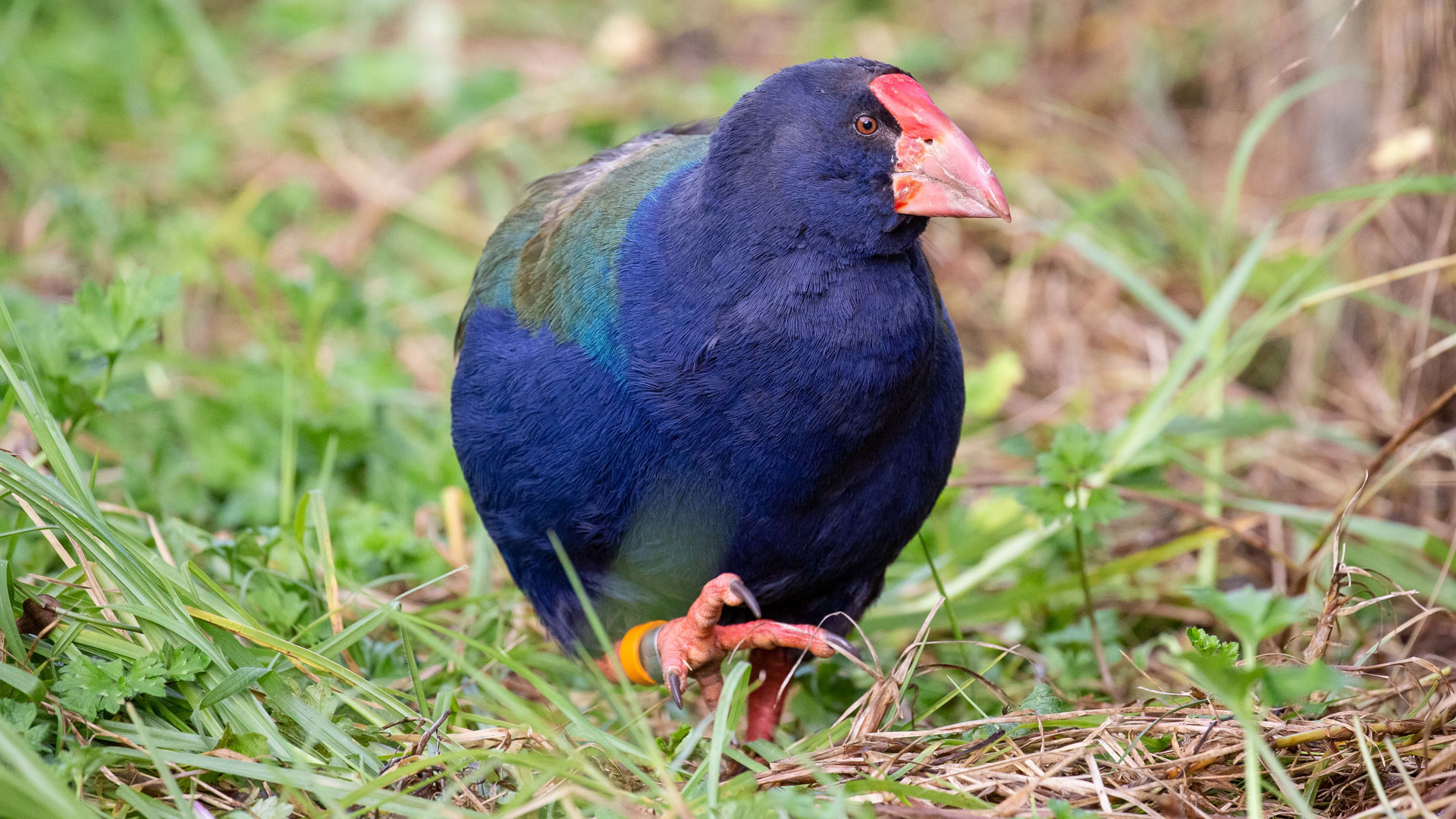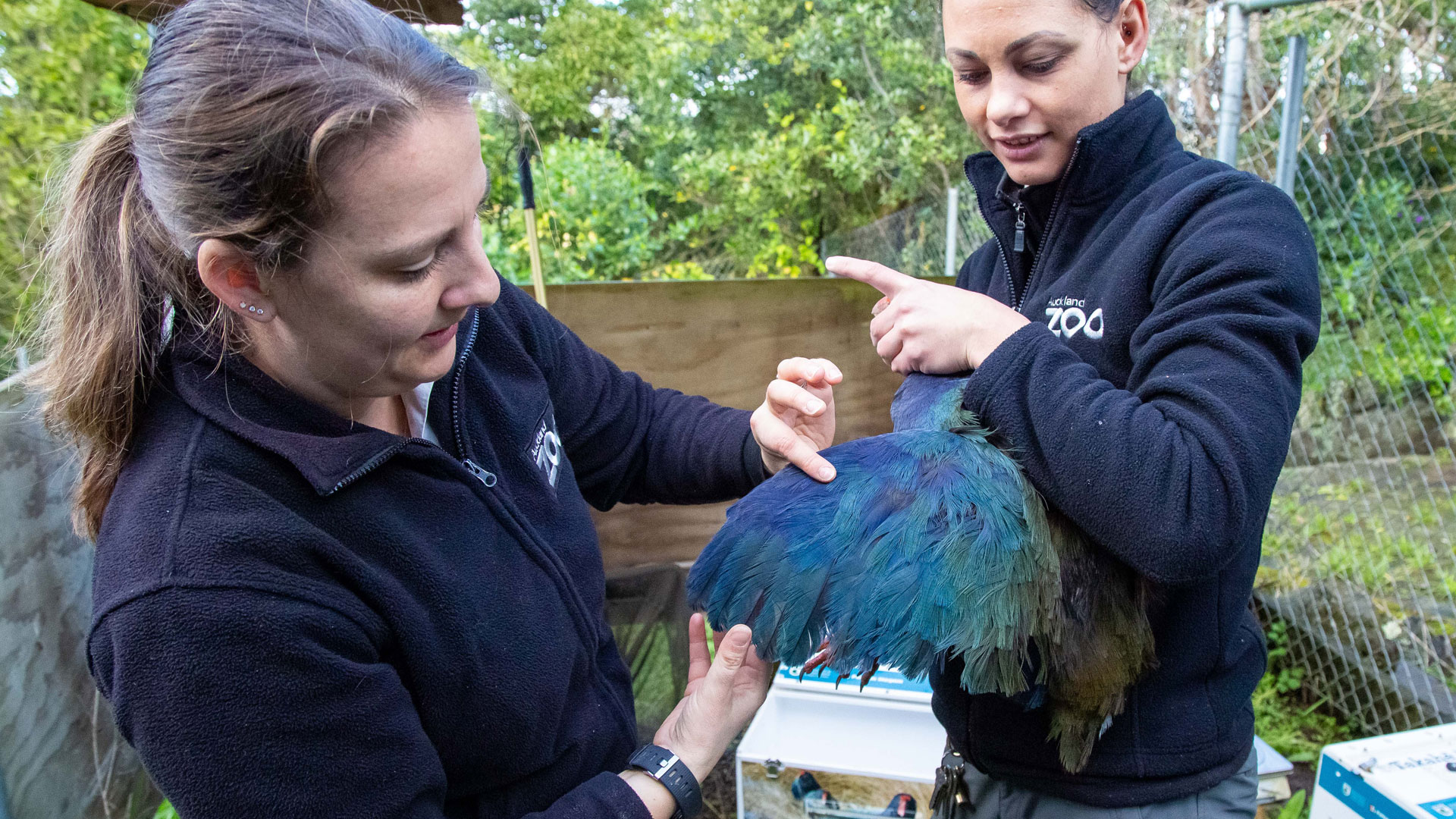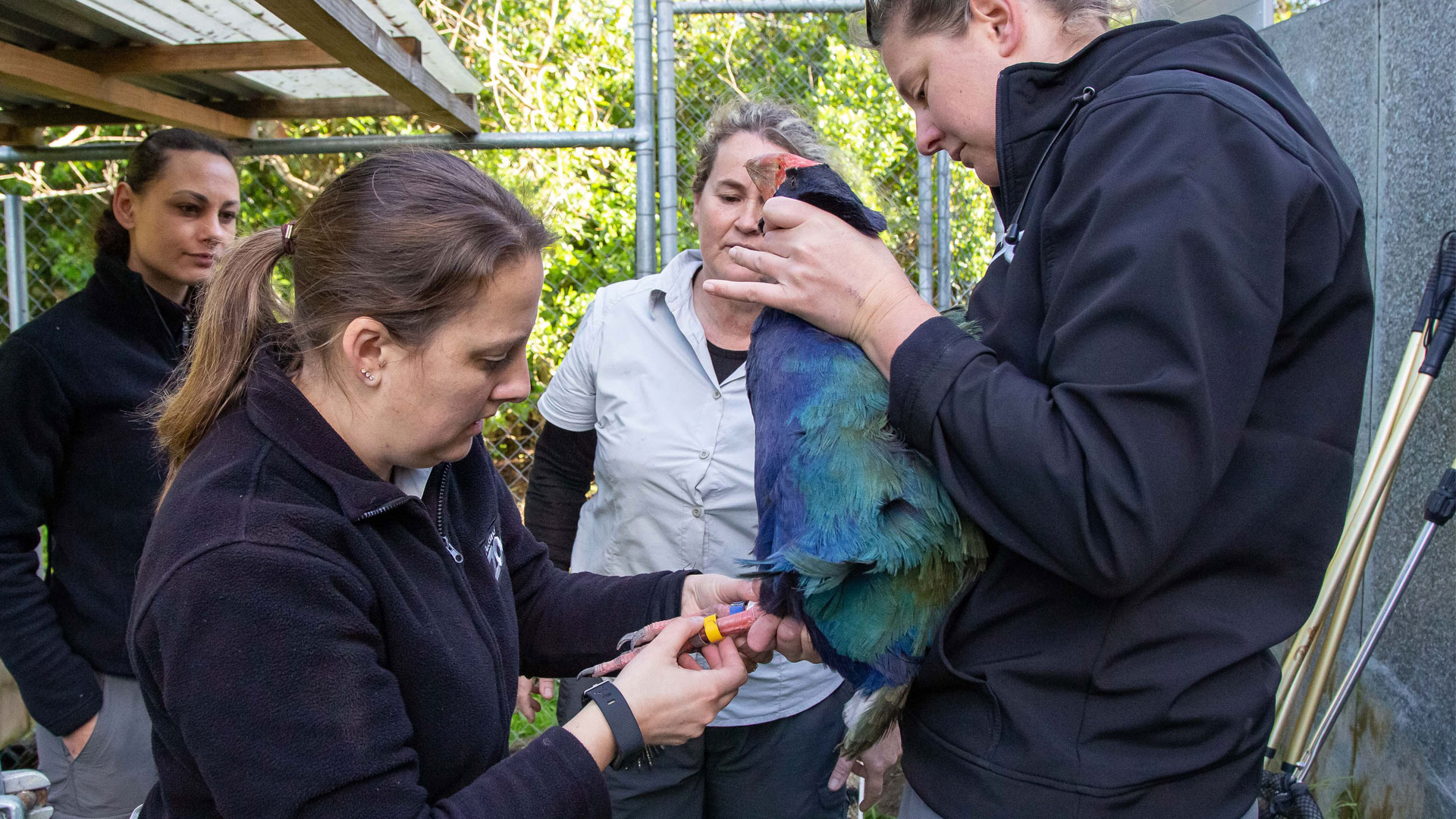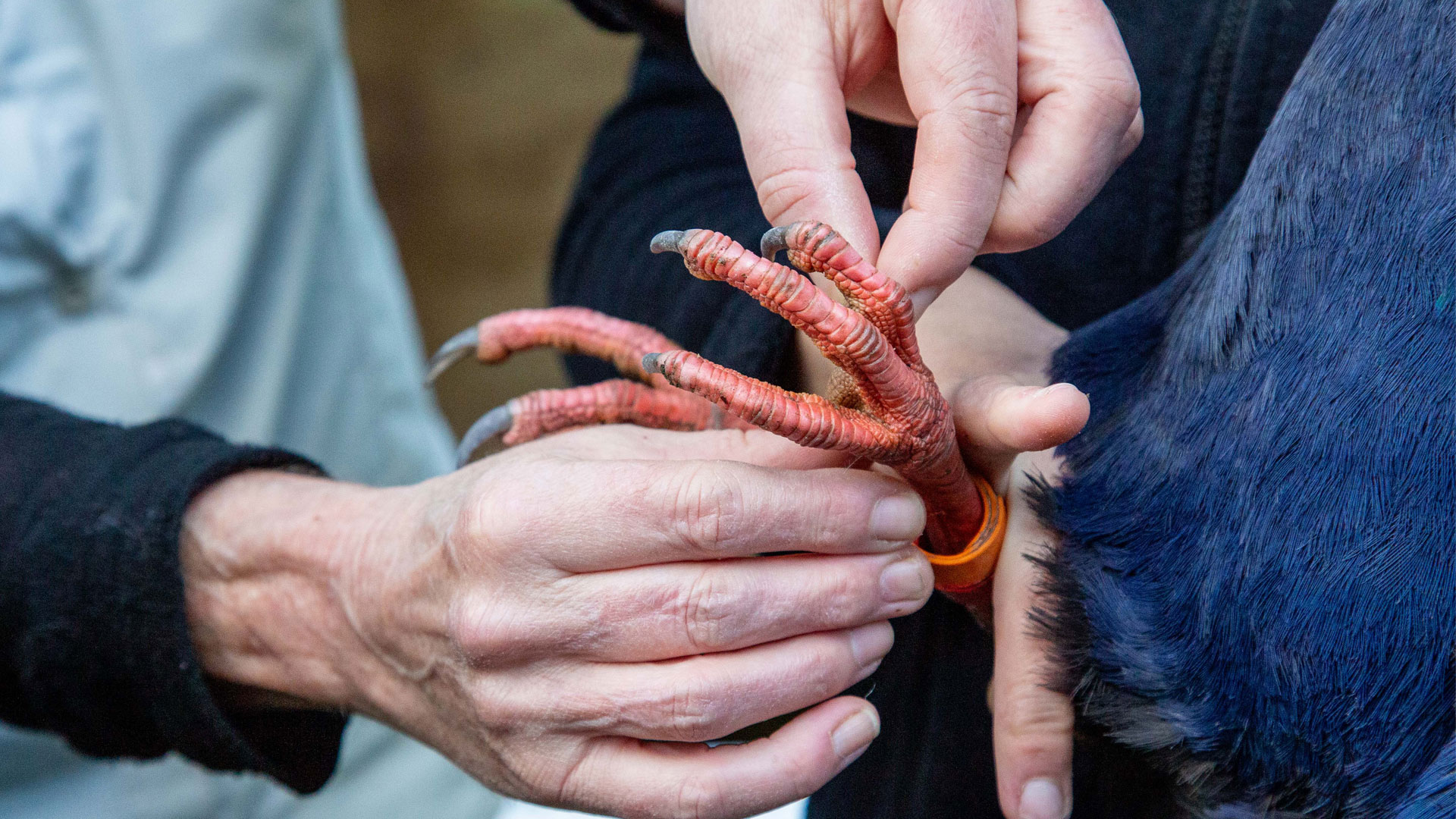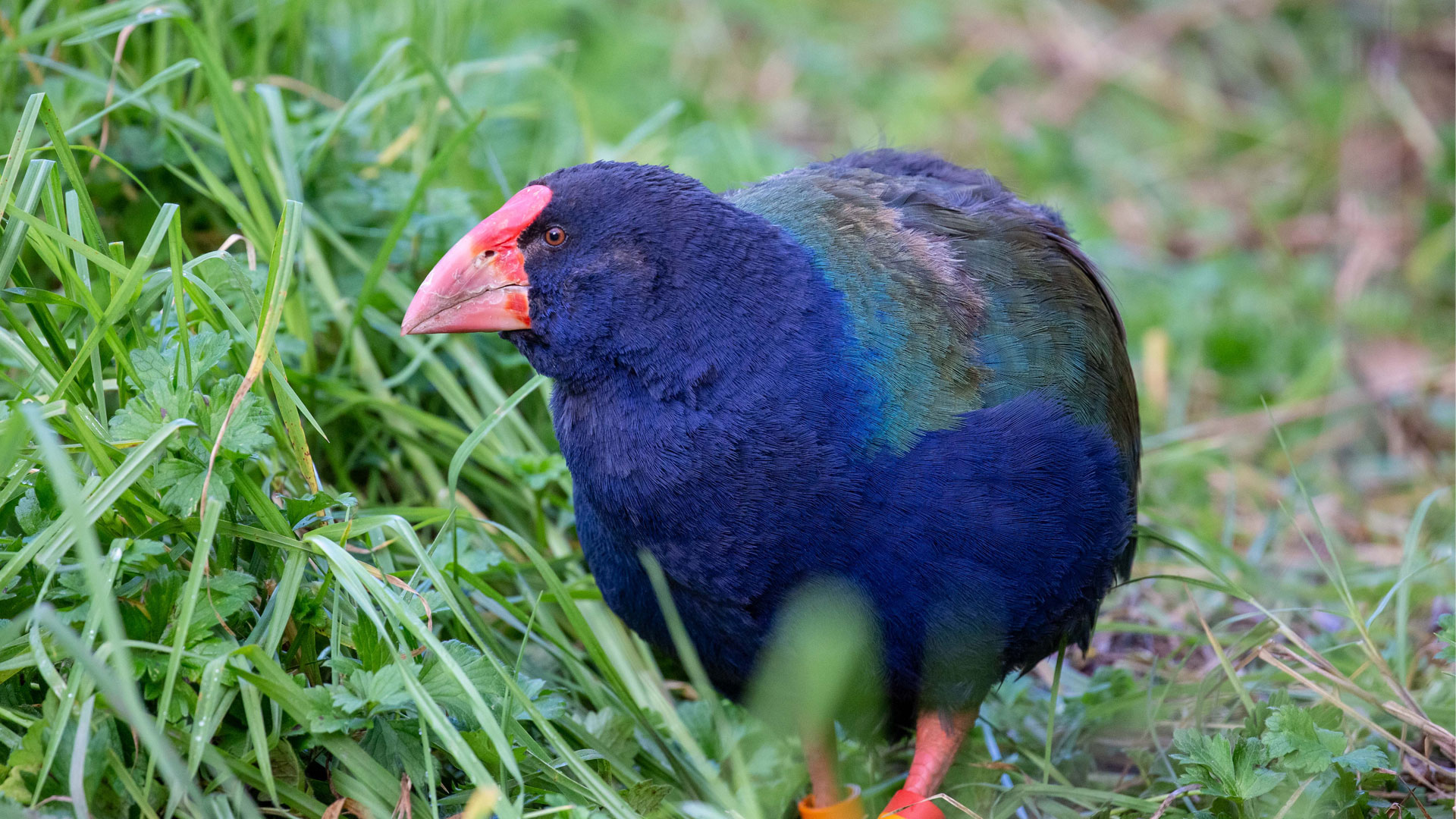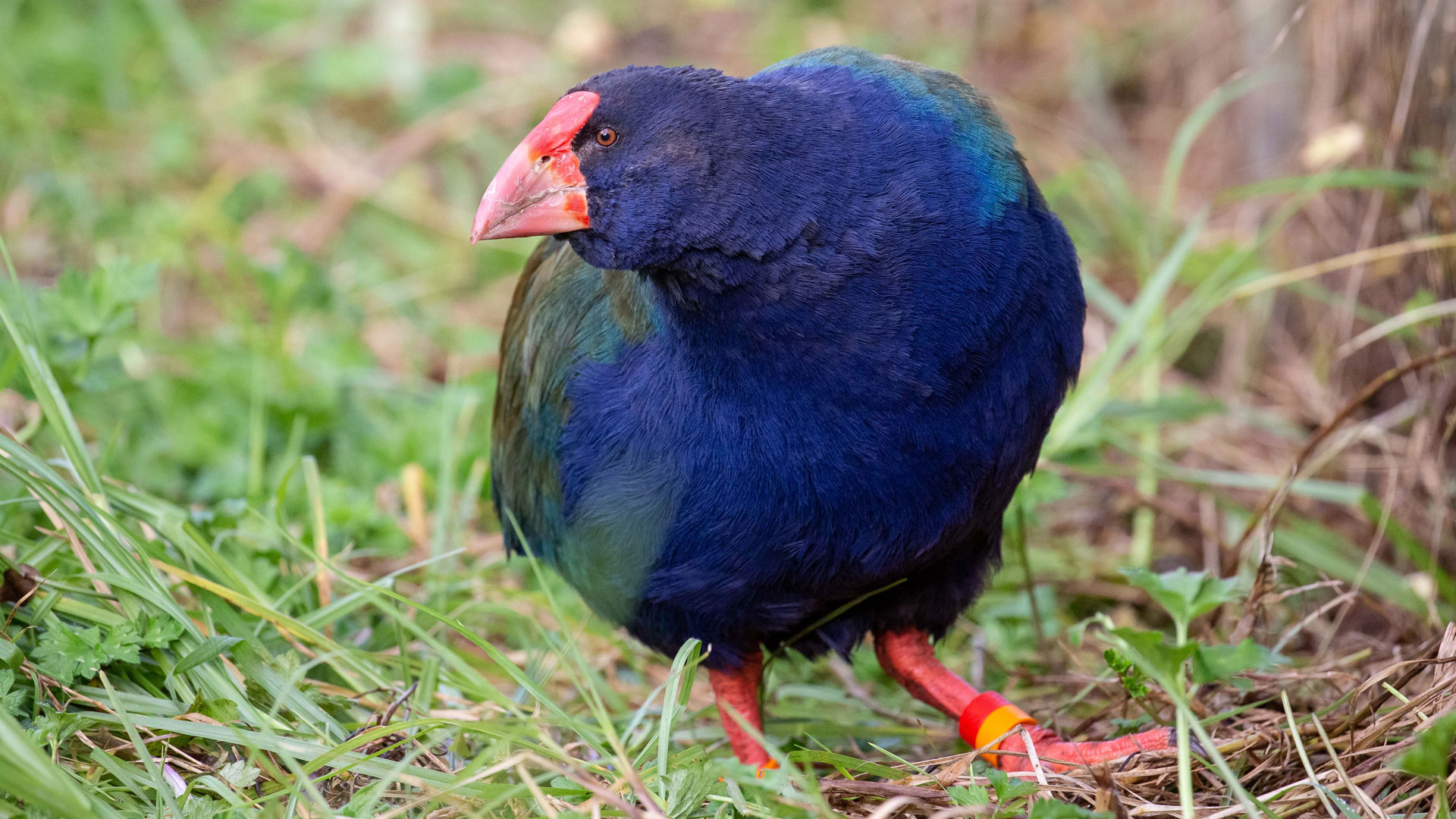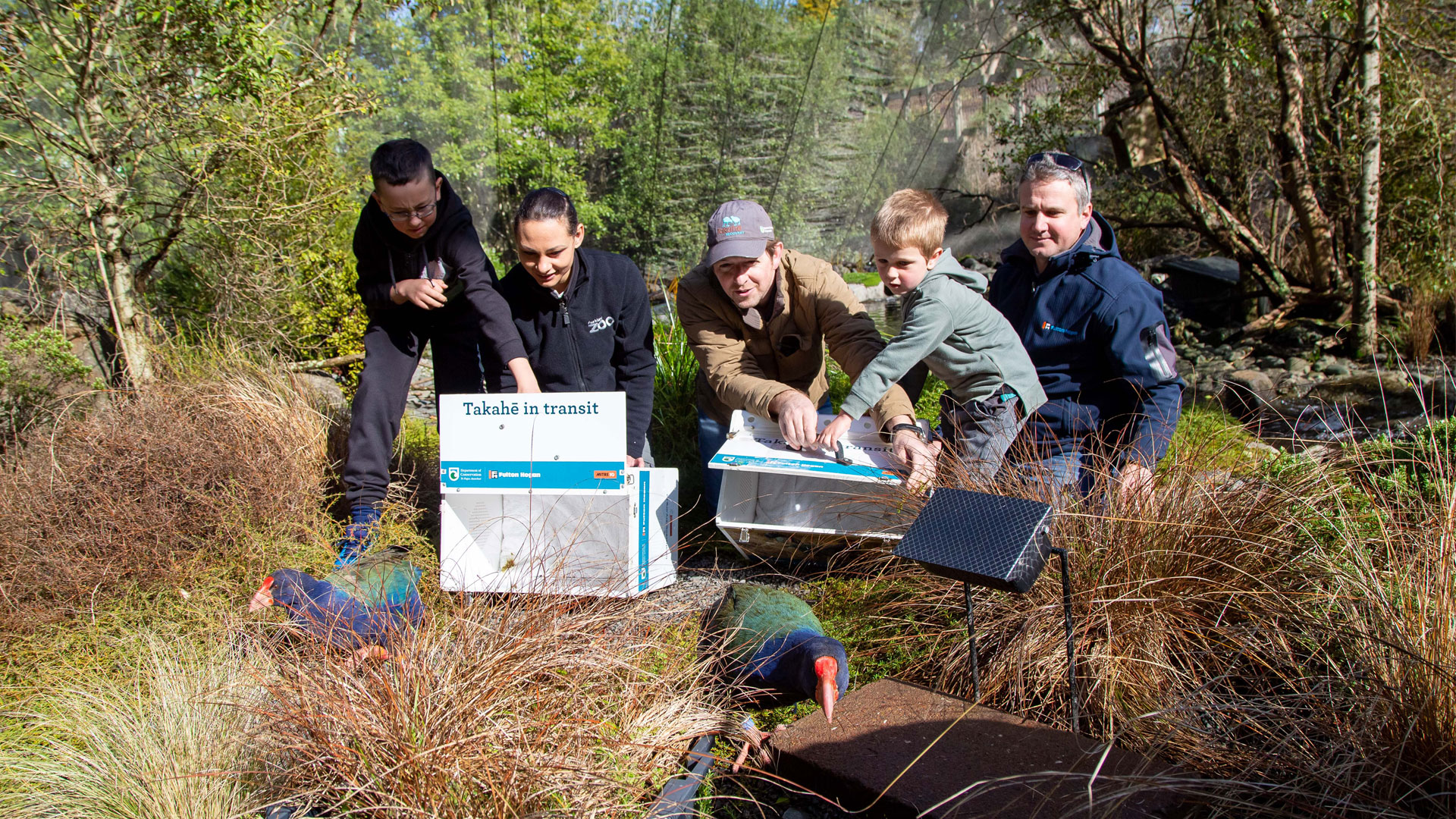Is it just a fat pūkeko?
Nah! Although pūkeko and takahē are both rail species*, takahē are much larger (nearly twice the size in fact!) as pūkeko. The smaller pūkeko can fly, while the takahē is flightless. The spectacularly iridescent feathers of the takahē are what really sets them apart. From dark blue on their head, peacock blue on the shoulders and olive-green and blue-black wings, their colouration makes them truly distinctive.
*rails are a family of small-medium sized ground-dwelling birds with short wings, large feet and long toes.


